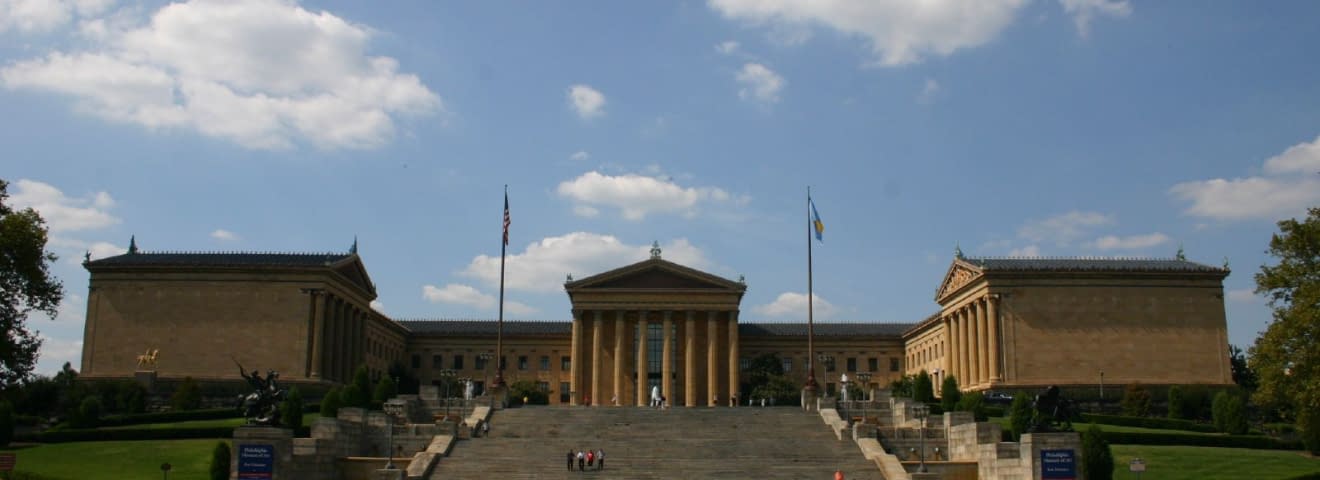A look at institutional critique and why art24 enables more diversity
Note: Technical terms are shown in italics the first time they are mentioned and explained in a glossary at the end of the text.
Its intention is to provoke self-reflection: The artistic practice of «institutional critique». More precisely, the aim is to critically examine institutional institutions, places and agents that shape and determine the conditions of the existence of art in our social structure. Its aim is to gain epistemological insight from this. Initially, artists used this method to reflect on the conditions under which they worked, in other words, under which they produced art. Their basic assumption was that art can have an impact. This means that by criticising the conditions, change can be achieved. How this «radical» genre of art developed and what it means to the art scene today, therefore also to art24, will be explained and experimented with in this article.
The first phase of institutional critique
The first phase of institutional critique began in the late 1960s and lasted until the 1970s. A particularly important work from this period: «Shapolsky et al.» by Hans Haacke from 1971. Haacke looked critically at the museum and the gallery as institutions. He especially was critical of the donors who finance these institutions and thus generate money from them. After all, investments are always accompanied by a political interest on the part of the financiers. He thus denounced the conflict between economic interests and the «free arts». Behind the art field, he saw a problematic structure where power, politics and capital meet – and the museums and galleries provided space for these components and foreign interests. He viewed these economic influences from a certain distance in his role as artist in «Shapolsky et al.», while at the same time using the institution of the «museum», namely the Guggenheim Museum in New York, as a platform for the work and its criticism. He received a correspondingly large reach and many reactions. By doing so, he showed that the conditions of art production are problematic; because outsiders control and influence the visibility and correspondingly also the non-visibility of works in museums and galleries. In this way, they play a key role in determining narratives in art and culture as well as in politics.
The second phase – radical self-criticism as a result
The second phase of institutional critique began towards the end of the 1980s and went one step further. The view was not only directed at the conditions that existed around the art field, but also at one's own involvement: for artists are also involved as actors in the art field:
“Schematisch formuliert, ging es der ,ersten Generationʽ der Institutionskritik um Distanz von der Institution, der ,zweitenʽ um die unausweichliche Involviertheit in die Institution” (Rauning 2007).
English translation: “Schematically formulated, the 'first generationʽ of institutional critique was interested in the distance from the institution, the 'secondʽ in the inescapable involvement into the institution. ”
The art production reflected its field of work and its methods in a new radicality. Thus, in retrospect, it can be said that Haacke was also part of this system. In addition to Haacke, however, the artist, activist and art theorist Andrea Fraser should be mentioned in particular for the second phase. In her performances, she addressed the social practices through which museums and galleries attempted to maintain their interpretational authority and power. An example of this is her performance “Museum Highlights: A Gallery Talk” from 1989In an austere look, Fraser led a tour of the Philadelphia Museum of Art as a lecturer and declared trivial objects and spaces to be art, such as an exit sign, the toilets or a water dispenser. Through this persiflage, she irritated visitors and questioned the interpretative sovereignty of the institution as well as the performative rituals and practices associated with it. In addition to persiflage, museum practices were demystified through the «reenactment» and thus lost their «performative power». In contrast to Haacke, Fraser does not see artists outside the system, but as part of it:
Just as art cannot exist outside the field of art, we cannot exist outside the field of art, at least not as artists, critics, curators, etc. […] So if there is no outside for us, it is not because the institution is perfectly closed, or exists as an apparatus in a ,totally administered societyʽ […]. It is because the institution is inside of us, and we can’t get outside of ourselves (Fraser 2005).
Fraser defined that «we», meaning the artists as well as all others involved in this institutionalised art field, co-produce the rituals, maintain them in their current state and legitimise them. This «apparatus» consequently only functions through confirmation from «outside» and thus becomes part of the «inside». Fraser therefore demanded that those involved take a closer look and question themselves: What kind of institution is it? What are the values of this institution and how does the institution regulate itself? And finally: What forms of power do institutions produce?
She began to analyse specific institutions in order to make the power relations visible and thus confessed to being an «accomplice» of art and economy. In doing so, she discovered that donors observe the system closely and can only call themselves «sponsors» and in this way inscribe themselves in history if they allow artists complete freedom – even if this means criticising their own person or institution. The search for autonomy is thus always involved in power relations precisely because of its search. The «game» was understood by the actors and artistic freedom was supported for the purpose of something, usually a public reputation and symbolic profit. Fraser realised this especially in her work «Project in Two Phases» for the Generali Foundation in Vienna 1994 to 1995, which commissioned a desired artistic critique (For more info on the work: Möntmann 2002).
This makes it clear that institutional critique in this form could no longer be taken seriously. At least what it embodied in the 90s, since it became part of the institutionalised apparatus with its own performative power. Artistic freedom embedded itself in the power structures and as a result became a privilege of the few. Put in extreme words: Whoever paid the most received the artistic work. In her work «Untitled» from 2003, Fraser made this connection between economy, art and power even clearer. In her video performance, she addressed aspects such as prostitution and dependencies, both of which referred metaphorically to the art market. In «Untitled», Fraser had sex with an art collector in a hotel room. The latter paid 20,000 dollars for this and in return was able to purchase the video work in advance. To sum up: the radical art of institutional critique was popular at the time, it was en vogue and very well paid. The question that can thus be raised for the art field in general, but can also be related to other power relations in our structural systems, is:Who prostitutes whom? And thus opens up follow-up questions about whether we want to live with this or whether we want to create new structures – and to what extent this is possible in the first place.
The third phase? Institutional critique today
In its logical consequence, the method of institutional critique itself cannot be taken without criticism. For theoretical, descriptive categories are mixed with normative categories. In theory, there are always factors that are arbitrarily included or excluded. So, in both cases it is a matter of possibilities. At the same time, it also means that art bears an enormous responsibility. With it, art historians and the other actors in the art field who take on its interpretation, mediation and thus its historiography and consequently participate in the co-determination of visibility and invisibility. For the development of institutional critique just described has the consequence that art practice and the artists inside become institutionalised through the academic debate. Through the transition into the academic, institutional canon, the term becomes associated with further power structures: It defines what institutional critique art is and is maintained and reproduced within an academic framework. The third stage of institutional critique is now taking place within institutions. This requires a re-examination in these circles: How can social critique, institutional critique and self-critique be interlinked to unfold a positive, transformational effect and synergies? And what does this mean for the actors in the art field, namely academia, museums, galleries and collectors? The following questions can serve as a starting point for further self-reflection: Who is written about, researched and published, and how? Who is presented in exhibitions and how is the exhibition displayed? Who ends up in the archive or not even in the collection? To sum up: Who is included in the canon and which structures and systems are thus reproduced? This dispute could have a huge impact on equal opportunities, diversity and representation. It must be kept in mind that individuals disrupt their own privileges and the circumstances of their livelihood through institutional critique. Thus, one's own power conditions must always be meant seriously and sincerely questioned, despite financial connection and dependency. This can show itself positively in new methods and forms of archiving and storing. But also, in deciding which definitions established in the past must continue to be upheld and which must be re-contextualised (disciplinary memory), to name but a few thoughts. This would fundamentally change the discipline of art history and art, as well as broaden the spectrum of art and theories.
Diversity as deconstruction of «Normality»
In order to deconstruct the current norm, a change of perspective can also be helpful by including and examining non-scientific influences or other, neighbouring disciplines. This maintains the scientific relevance in one's own discipline and contextualises it as an influencing factor. This brings new, previously unnoticed aspects into focus, creating a more holistic picture of the world. For example, gender studies, postcolonial studies, African studies, social policy, etc. can provide new insights. But also, achievements that have already been made but have not yet been given sufficient attention, or have even been attributed to other people, become visible in this way. This systematic integration can enrich the sciences themselves but also portray the world more accurately. This makes discussions visible or corrects incidents that were previously not brought to light by a specific and often unquestioned historiography. Only in this way is institutional critique not completely co-opted into the institution/power structure and, to a certain extent, into itself, but can serve as an analytical tool. And what does art24 have in common with these ideas?
art24 offers new possibilities within the system. Fundamental to art24 is the openness guaranteed by the internet. Visibility is made possible for all artists. In contrast to galleries and museums, a much more minimal selection takes place. Furthermore, in contrast to museums, archiving is not left to us as a platform, but to the artists. They decide for themselves which works they want to display in their personal digital space or shop window and at which point in time. Lower costs for using the platform are also an important aspect of this low-threshold approach. This gives artists independence from traditional galleries but also from museums, which can often only buy a limited number of works. Artists can connect directly with interested people all over the world, which creates exciting projects and also increases their reach enormously. For people interested in art, the hurdles are much lower with an art platform when it comes to viewing and buying art. Often there is an elitist barrier with viewing objects in galleries or auction houses. On the art24 platform, the audience immediately becomes much more diverse. There are also financial aspects. Attending art fairs is often expensive and time-consuming, and exhibits in galleries often have a much higher price. art24 makes exciting artworks accessible to people regardless of their financial background and enables them to start their own collection. In return, they support artists who are just starting their careers.
Of course, this means that we as platform operators have to deal with questions again and again: Can we make the platform even more accessible? How can we show the art in the best way? How do we deal with the fact that the art shown should nevertheless correspond to a certain quality? What kind of holes and blanks does the platform have in terms of art history? What new narratives can be told, even if they sometimes seem experimental? How do we take into account the training of artists and self-taught artists? But also the public nature of the platform challenges us, should it not be exploited in our principles to be able to fulfil our moral/ethical responsibility and to offer a safe place for all. Writing about art and artists in the blog and future formats should always address this aspect of power. For example, who do we give more visibility to and for what reasons? With which institutions do we cooperate and how do we shape these cooperations?
So there are many questions arising from institutional critique that we must constantly ask ourselves as a company, as a new player in the art market and as a power entity. Self-reflection is enormously important because it provides a knowledge archive of methods and theories of how diversity can be reproduced. At the same time, there is always an element of hope in self-reflection, the wish that this approach will escape its own institutionalisation and remain contemporary through constantly new forms of expression. Probably, institutional critique is also meant to constantly reinvent itself, because this makes cultural participation possible for more and more people. In conclusion, institutional critique can thus serve to deconstruct the current «normality» in the art world and offer new forms of visibility.
Glossary:
Epistemological: Epistemology (Greek episteme: knowledge, knowledge, science; logos: reason, doctrine), also known as epistemology or philosophy of science, is a term from philosophy. It refers to principles and methods that explore the preconditions of knowledge and how knowledge comes about. Thus also the historical and systematic conditions of knowledge and cognition.
Narrative: Narrative is a term that is also used in social science, among other fields. It refers to a narrative that has an influence on our perception of the environment and society. Thus, values and emotions are also transported in narratives. Through their constant retelling, narratives are legitimised and consolidated. As a result, they gain power.
Reenactment: Originally, it was used to describe the staging of historical events. Appropriation art also used reenactment, among other things as a performance strategy. The aim is to recreate actions from the past.
Apparatus: Apparatus, or dispositif, according to the philosopher Michel Foucault, is the network or system of relations that can be established between these different phenomena. It thus describes power relations between institutions, persons, discourses and practices.
Descriptive: This is understood as a scientific procedure. The value-free description of points of view/statements takes place. Consequently, what is and not what should be is described. In this way, the method differs from normative statements, which make rules and definitions of facts. These always make a value judgement.
Disciplinary memory: The term refers to research traditions, i.e., scientifically established methods, concepts and bodies of knowledge. These co-determine historiography, whereby outdated narratives are also maintained while others are excluded. Disciplinary memory should therefore be regularly questioned, since historiography is not closed either.
Co-optation: Co-optation refers to the inclusion of members in a larger body as an afterthought.
Literature references:
Fraser 2005. Fraser Andrea, From the critique of institutions to an institute of critique. Artforum International, 44, pp. 278–283.
Möntmann 2002. Möntmann Nina, Kunst als sozialer Raum. Andrea Fraser, Martha Rosler, Rirkit Tiravanija, Reneé Green, Köln 2002.
Rauning 2007. Rauning Gerald, Instituierende Praxen. Fliehen, Instituieren, Transformieren. Psychologie & Gesellschaftskritik, 31(1), pp. 81–92.
Whitney Museum of Art. Whitney Museum of Art, Hans Haacke. Shapolsky et al. Manhattan Real Estate Holdings, a Real-Time Social System, as of May 1, 1971. Homepage des Whitney Museum of Art, available under: https://whitney.org/collection/works/29487 (Accessed on 17/03/2022).
Foto:
Foto_1: Philadelphia Museums of Art, Main entrance, Photo: Wikipedia, su1droot - Flickr, CC BY 2.0.







